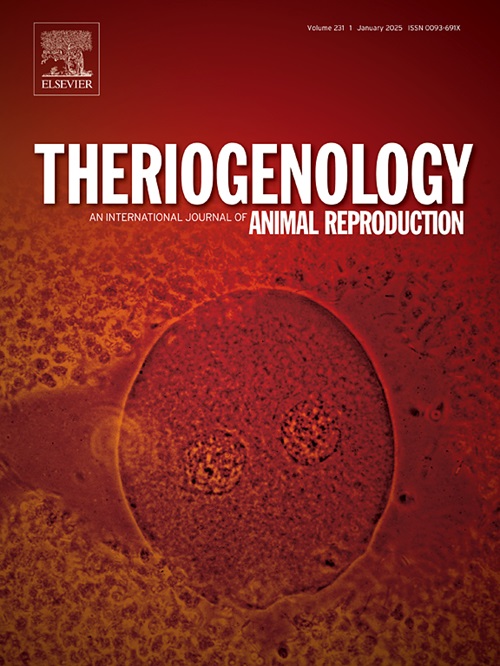绵羊扩展胚培养和滋养细胞分化的优化
IF 2.4
2区 农林科学
Q3 REPRODUCTIVE BIOLOGY
引用次数: 0
摘要
本研究旨在探索绵羊胚胎扩展培养和滋养细胞分化的优化,以提高我们对胚胎发育和着床的早期阶段的认识。采用无饲料培养和子宫内膜类器官(EOs)条件培养基培养相结合的方法,成功地延长了胚胎的体外发育时间,直至受精后第20天。在发育后期观察到类似早期原肠胚的形态变化和子叶样的形成。相对定量PCR分析显示,与多能性和早期谱系规范相关的基因表达有精心安排的波动。在无饲料培养条件下,将滋养细胞传代3次,免疫荧光分析证实了关键滋养细胞标志物CDX2、GATA3、syncytin-1、β-catenin、SOX2、Fascin、SOX9、BMP4、MYC、KRT7和KRT18的表达。结果表明,在EOs条件培养基中培养的胚胎明显改善了附着和分化,突出了母体组织相互作用的关键作用。这些发现为胎盘发育提供了有价值的见解,并为辅助生殖技术和牲畜育种进步提供了潜在的应用。本文章由计算机程序翻译,如有差异,请以英文原文为准。
Optimizing extended embryo culture and trophoblast derivation in sheep
This study explores the optimization of extended embryo culture and trophoblast derivation in sheep to enhance our understanding of the early stages of embryonic development and implantation. Using a combination of feeder-free culture conditions and culture in endometrial organoids (EOs) conditioned medium, we successfully supported prolonged embryo development in vitro till day 20 post-fertilization. Morphological changes resembling early gastrulation-like events and cotyledon-like formation were observed by advanced development. Relative quantitative PCR analysis showed orchestrated fluctuations in gene expression related to pluripotency and early lineage specifications. Trophoblast cells were passaged three times using feeder-free culture conditions and immunofluorescence analysis confirmed the expression of key trophoblast markers including CDX2, GATA3, syncytin-1, β-catenin, SOX2, Fascin, SOX9, BMP4, MYC, KRT7, and KRT18. The results demonstrated that embryos cultured in EOs conditioned medium significantly improved attachment and differentiation, highlighting the critical role of maternal tissue interactions. These findings provide valuable insights into placental development and hold potential applications for assisted reproductive technologies and livestock breeding advancements.
求助全文
通过发布文献求助,成功后即可免费获取论文全文。
去求助
来源期刊

Theriogenology
农林科学-生殖生物学
CiteScore
5.50
自引率
14.30%
发文量
387
审稿时长
72 days
期刊介绍:
Theriogenology provides an international forum for researchers, clinicians, and industry professionals in animal reproductive biology. This acclaimed journal publishes articles on a wide range of topics in reproductive and developmental biology, of domestic mammal, avian, and aquatic species as well as wild species which are the object of veterinary care in research or conservation programs.
 求助内容:
求助内容: 应助结果提醒方式:
应助结果提醒方式:


